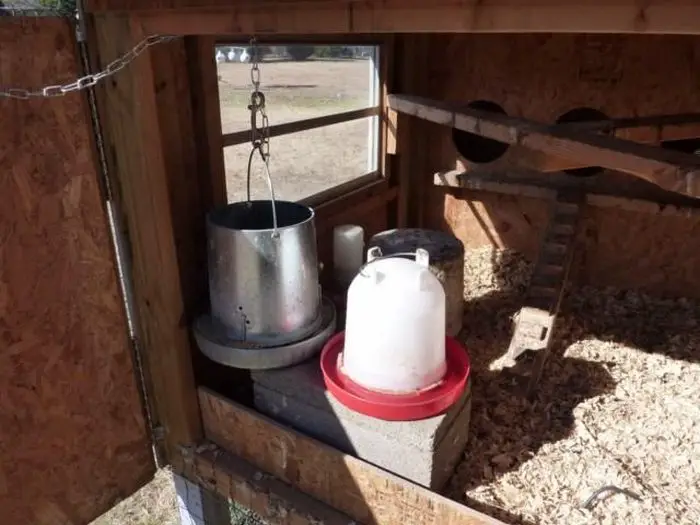Now here’s a must-have for those raising chickens in areas with extreme cold weather – a cinder block chicken waterer heater!
Chooks are very well capable of keeping themselves warm during winter. But keeping their drinking water from freezing is something that they cannot do. So if it tends to get very cold in your place, providing your chicken coop with a heated chicken waterer is one important measure you shouldn’t forget.
There are commercial heated bases available for chicken waterer units. But you can also simply build one yourself using materials you probably already have!
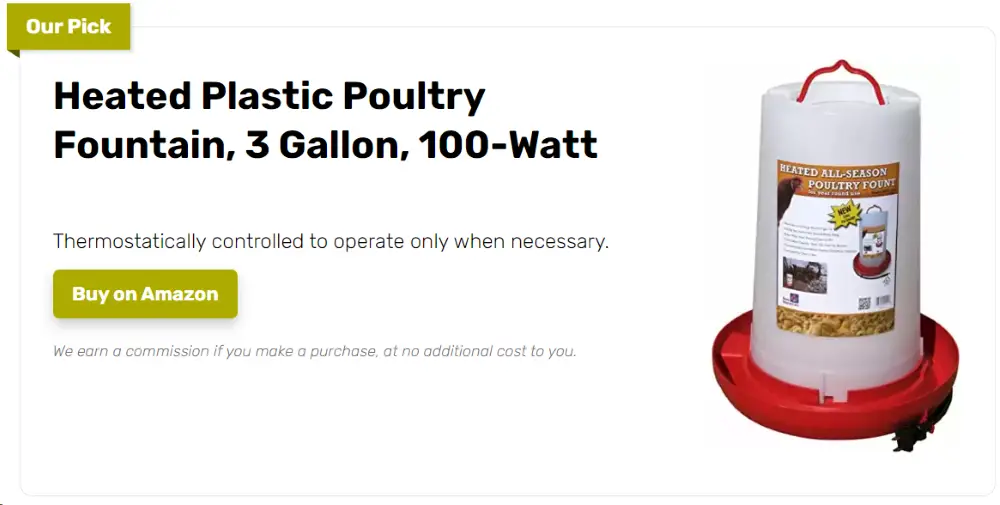
This DIY project is one example; using a cinder block and a matching concrete stepping stone.
Being a cinder block, it is great for providing just enough heat to keep the water warm. It keeps the chicken waterer above the ground, so it also keeps water free of chicken poop and other dirt.
It’s very easy to set up and all you have to remember is to make sure that no wood comes into direct contact with heat and other electrical components!
Contents
Building a Cinder Block Chicken Waterer Heater
Materials
- Cinder Block
- Concrete Stepping Stone (size should be fit to cover the cinder block)
- Light Bulb and Socket
- Aluminum Bracket
- Screws/Bolts and Nuts
Tool
- Cordless Drill
Instructions
- Step 1: Prep the Block: Wash the cinder block well. Remove all dirt and dust to ensure a clean start.
- Step 2: Attach the Bracket: Use your cordless drill to secure the aluminum bracket inside the block. This holds your light socket. Check that the bracket is tight and positioned so the bulb won’t touch the block’s sides once in place.
- Step 3: Add the Bulb: Screw in the light bulb into the socket. Choose an incandescent bulb for its heat, not light. Stick to a low wattage to avoid overheating risks.
- Step 4: Set the Stone: Place the concrete stepping stone on top of the block. It serves as a lid and a platform, keeping the heat in.
- Step 5: Choose a Location: Pick a spot for the heater. It must be easy for chickens to reach but safe from fire risks. The heater should be on a stable, fireproof base.
- Step 6: Test It Out: Before putting it in the coop, test the heater. Plug it in and let it warm for a few hours. The stone should get warm, not hot.
- Step 7: Position the Waterer: After testing, put your chicken waterer on the stone. This setup should prevent the water from freezing, ensuring your chickens have access to water.
Chicken Waterer Heater Ideas
Here are a few other DIY chicken waterer heater ideas for you:
Click on any image to start the lightbox display. Use your Esc key to close the lightbox.![]()
Cinder Block Heater
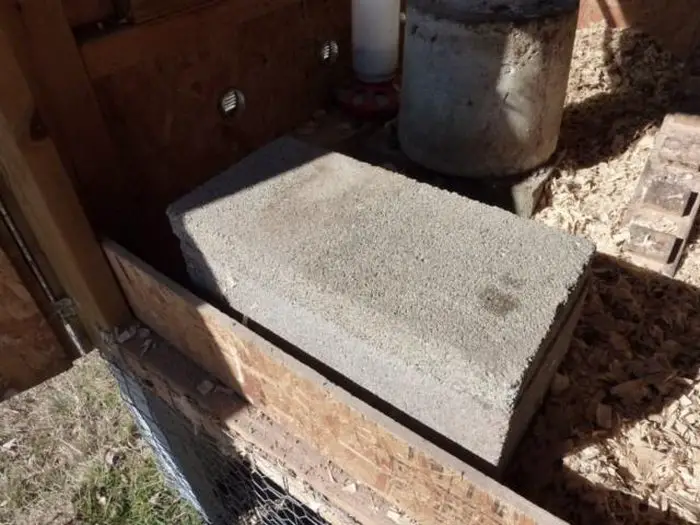
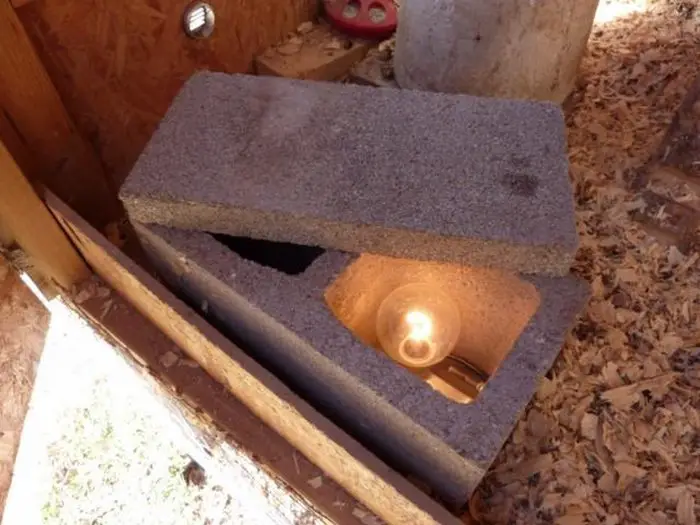
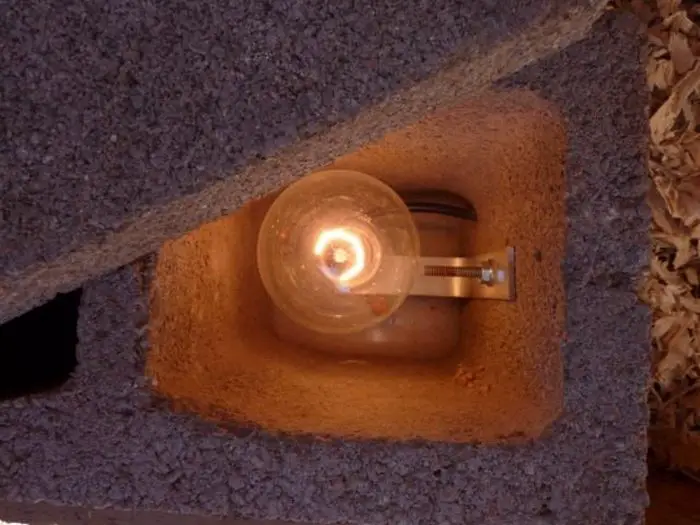
Hanging Bucket with Nipples
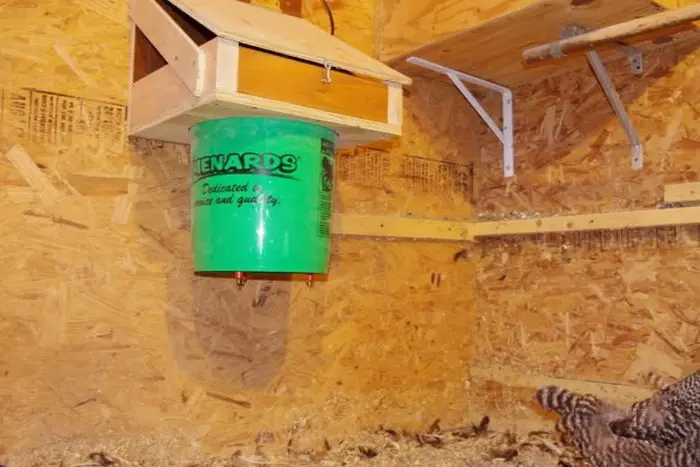
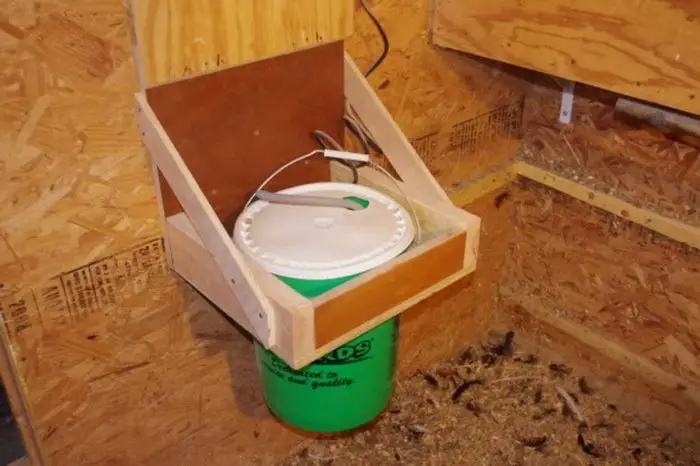

Cookie Tin Heater

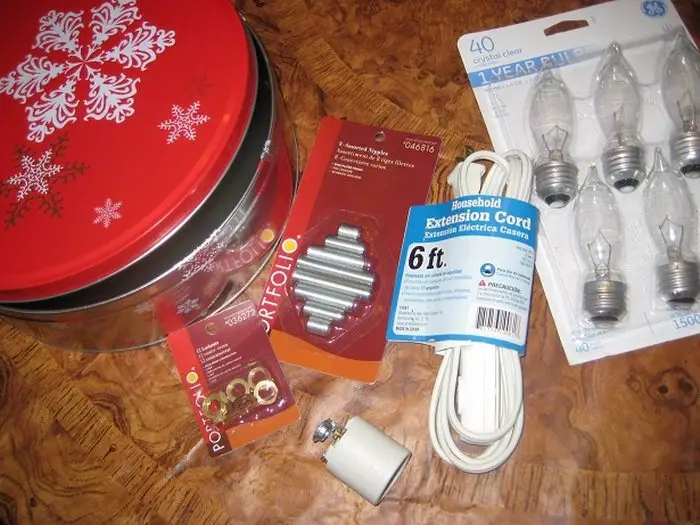
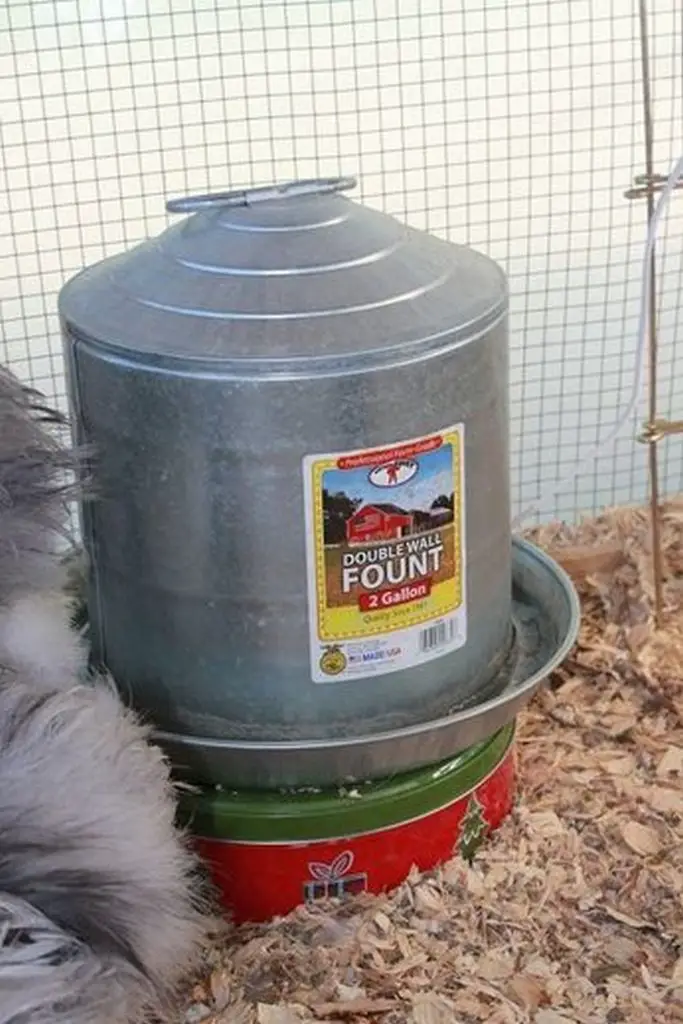
Terra Cotta Pot Heater
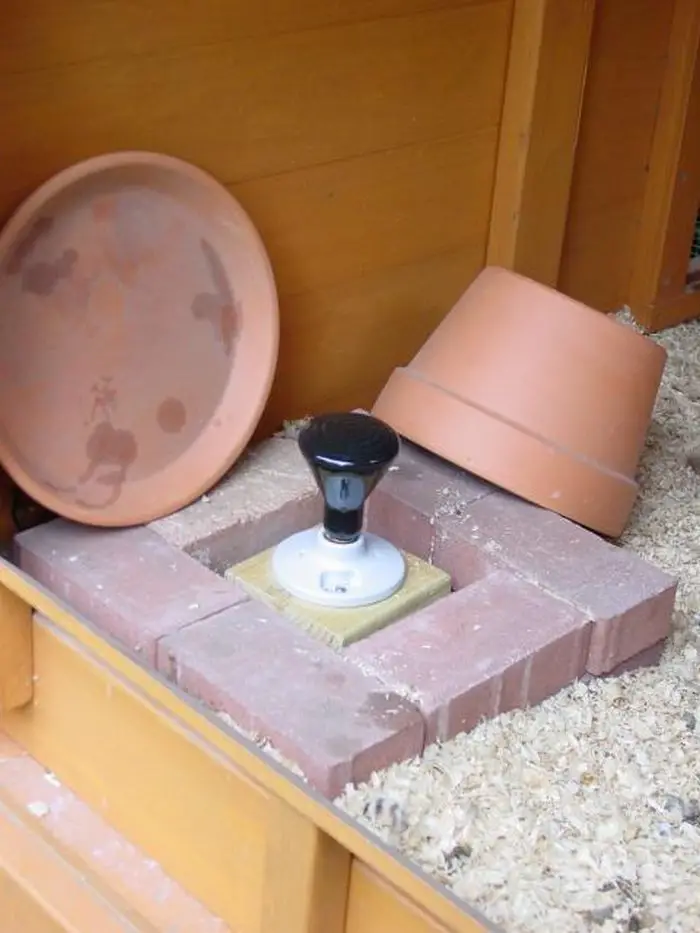
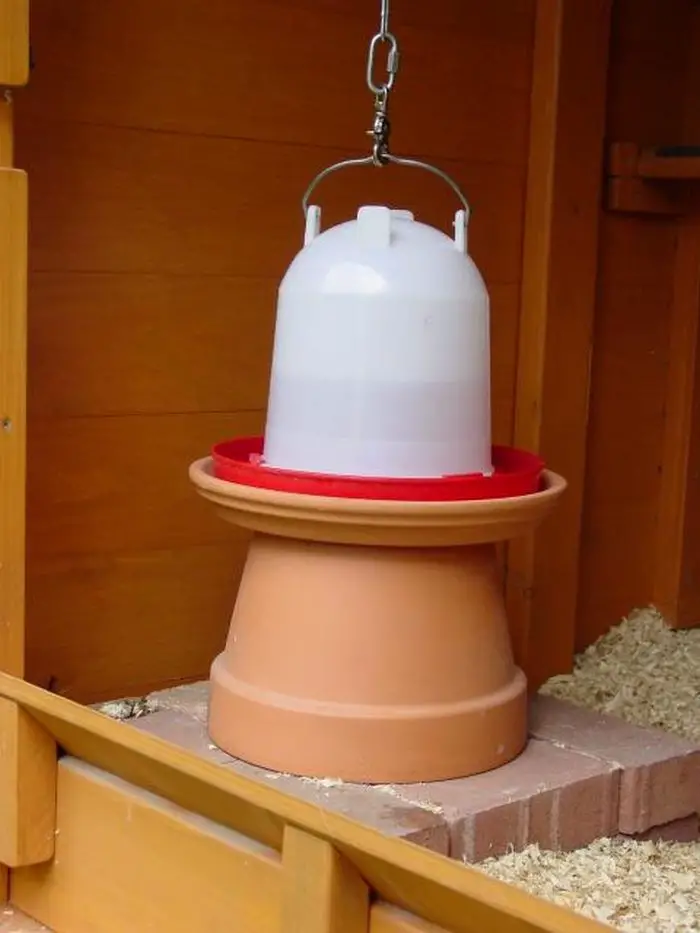
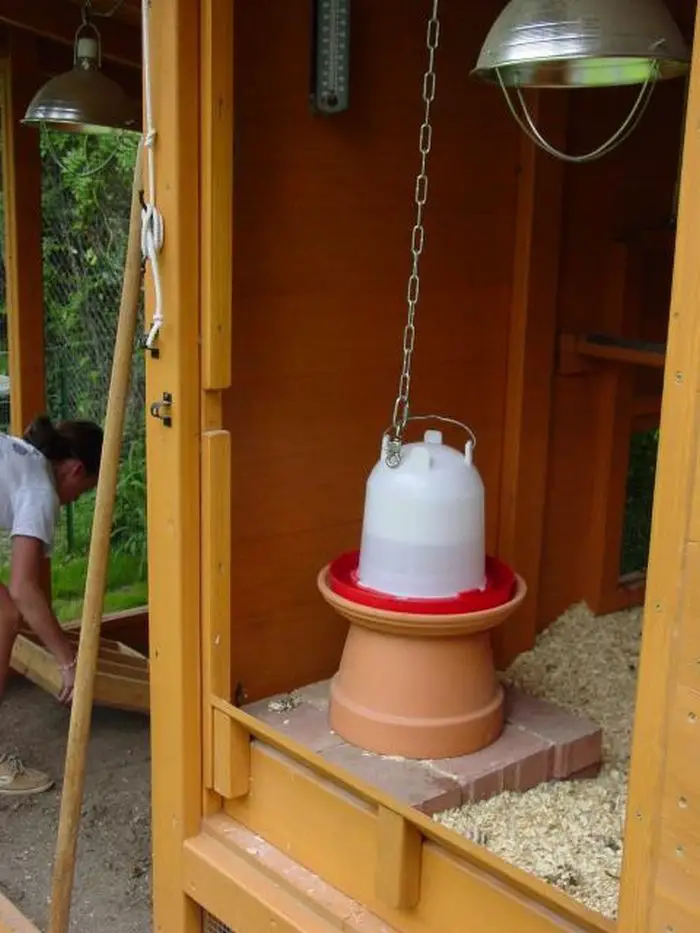
Safety Precautions for DIY Cinder Block Heated Chicken Waterers
Creating a cinder block chicken waterer heater is a fantastic DIY project to ensure your chickens have access to unfrozen water during cold weather. However, safety is paramount when building and using your cinder block chicken waterer heater.
Follow these precautions to keep your coop safe and functional.
Proper Assembly
When assembling your cinder block chicken waterer heater, ensure all components are correctly installed. The aluminum bracket must securely hold the light bulb socket inside the cinder block. This prevents direct contact between the light bulb and the cinder block in your chicken waterer heater, reducing fire risks.
Choosing the Right Bulb
For your cinder block chicken waterer heater, selecting the correct type of bulb is crucial. Use an incandescent bulb for its heat generation properties. Avoid high-wattage bulbs to minimize overheating risks in your cinder block chicken waterer heater.
Regular Inspections
Regularly inspect your cinder block chicken waterer heater for signs of wear or damage. Check the electrical components, the integrity of the cinder block, and the placement of the concrete stepping stone. Any damage could compromise the safety of your cinder block chicken waterer heater.
Safe Placement
Place your cinder block chicken waterer heater on a stable, fire-resistant surface. Ensure it’s located in a part of the coop that’s accessible to chickens but safe from bedding materials and other flammable items. The correct placement of your cinder block chicken waterer heater is vital for coop safety.
Avoid Water Contact
Water should never come into direct contact with the electrical components of your cinder block chicken waterer heater. Ensure the waterer placed on the concrete stepping stone does not leak. Any moisture entering the cinder block chicken waterer heater can pose electrocution risks.
Use a Ground Fault Circuit Interrupter (GFCI)
For added safety, connect your cinder block chicken waterer heater to a GFCI outlet. This precaution helps prevent electrical shocks and is a critical safety feature for any electrical device used outdoors, including your cinder block chicken waterer heater.
Monitor Temperature
Avoid overheating by monitoring the temperature of your cinder block chicken waterer heater. Ensure it provides gentle warmth sufficient to prevent water from freezing without becoming excessively hot. The stepping stone should be warm to the touch but not hot.
Educate Yourself on Electrical Safety
Before starting your project, familiarize yourself with basic electrical safety principles. Understanding how to safely handle and install electrical components is essential for the safe operation of your cinder block chicken waterer heater.
By following these safety precautions, you can enjoy the benefits of a cinder block chicken waterer heater without compromising the safety of your coop or flock. Always prioritize safety to ensure your DIY project contributes positively to your chicken keeping experience.
Maintenance and Troubleshooting
Maintaining your cinder block chicken waterer heater ensures it operates safely and efficiently throughout the cold seasons. Regular maintenance and timely troubleshooting can extend the life of your heater and keep your flock’s water supply unfrozen. Here’s how to keep your cinder block chicken waterer heater in top condition.
Regular Cleaning
Keep your cinder block chicken waterer heater clean to ensure optimal performance. Dust, feathers, and other debris can accumulate, potentially blocking heat flow. Gently clean the exterior of the cinder block and the concrete stepping stone, ensuring they’re free of obstructions that could impede the heater’s effectiveness.
Inspecting Electrical Components
The electrical components of your cinder block chicken waterer heater are crucial for its operation. Regularly check the light bulb, socket, and any extension cords for signs of wear or damage. Replace any components that appear frayed, cracked, or otherwise compromised to maintain the safety and functionality of your cinder block chicken waterer heater.
Monitoring Heat Distribution
Periodically check that your cinder block chicken waterer heater is distributing heat evenly. The concrete stepping stone should be uniformly warm, indicating effective heat transfer. Uneven heating might suggest issues with the light bulb placement or that the bulb itself is nearing the end of its lifespan.
Waterer Inspection
Inspect the waterer sitting atop your cinder block chicken waterer heater for leaks or damage. Water leakage into the heater can cause damage to the electrical components and pose safety risks. Ensure the waterer is intact and securely positioned on the concrete stepping stone.
Troubleshooting Tips
- Reduced Heating Efficiency: If your cinder block chicken waterer heater isn’t keeping the water from freezing, first check the light bulb. Replacing a burnt-out bulb or upgrading to one with a slightly higher wattage (while still avoiding overheating risks) can resolve the issue.
- Electrical Issues: Should the cinder block chicken waterer heater stop working entirely, carefully inspect all electrical connections and components. Use a multimeter to test the socket and ensure the power source is functioning correctly.
- Overheating: If the cinder block chicken waterer heater becomes too hot, immediately unplug it and allow it to cool. Consider using a bulb with a lower wattage to prevent excessive heat generation.
Annual Review
Before the onset of cold weather, give your cinder block chicken waterer heater a thorough review. Check for any potential issues and perform necessary maintenance tasks. This proactive approach ensures your heater is ready to perform effectively when temperatures drop.
Maintaining your cinder block chicken waterer heater is straightforward but essential. Regular care and timely troubleshooting keep it functioning safely and efficiently, providing your chickens with unfrozen water throughout the winter.

Alternative Energy Sources for Heated Chicken Waterers
Exploring alternative energy sources for heated chicken waterers can enhance sustainability and potentially save on electricity costs, which is especially important for those looking to maintain a green lifestyle while keeping their flock’s water unfrozen in winter.
We’re looking into some innovative solutions that can be adapted to power your heated chicken waterer, including the cinder block chicken waterer heater.
Solar Power
Solar panels can provide a renewable source of energy for your cinder block chicken waterer heater. By connecting a small solar panel system to a battery, you can store energy during the day to power the heater when temperatures drop. This setup is ideal for remote coops or areas with ample sunlight.
Wind Energy
Small wind turbines can generate power for your heated chicken waterer. Similar to solar power, energy generated by a turbine can be stored in a battery and used to power the heater. This option is best suited for locations with consistent wind speeds.
Biogas
For those with access to organic waste, biogas is a viable alternative energy source. A small-scale biogas digester can convert waste into methane, which can then be used to heat water directly or power a generator for your cinder block chicken waterer heater. This method not only provides energy but also helps manage waste.
Geothermal
Geothermal systems use the earth’s stable underground temperature to provide heating. While more complex and potentially costly to install, a geothermal system can be used to circulate warm water beneath the chicken coop, indirectly heating the waterer without direct electrical heating elements.
Battery Power
Rechargeable batteries, particularly those charged via renewable sources like solar or wind, can be an effective way to power your cinder block chicken waterer heater. This method offers portability and is useful for coops without direct access to electrical outlets.
Thermal Mass
While not an energy source per se, incorporating thermal mass around your waterer can reduce the need for powered heating. Materials like water barrels painted black, placed in sunlight, absorb heat during the day and release it slowly, helping to keep the area around the waterer warmer.
Combining Methods
Often, a combination of these alternative energy sources can offer the most reliable solution for heating your chicken waterer. For example, solar panels can power the heater on sunny days, with wind energy providing backup on overcast or windy days.
Adopting alternative energy sources for your heated chicken waterer, such as the cinder block chicken waterer heater, not only supports sustainability but also ensures your chickens have access to liquid water throughout the
Conclusion
Building a cinder block chicken waterer heater offers an effective, eco-friendly solution to keep your chickens’ water from freezing in cold weather. With options for alternative energy sources, this DIY project can be adapted to suit any backyard farm’s needs and sustainability goals. Ultimately, it ensures your flock stays hydrated through the winter, promoting their health and wellbeing in an innovative way.
We have more ways to keep your chickens healthy. Read our post on chicken playground ideas next!

